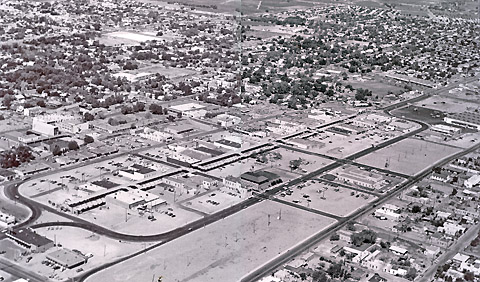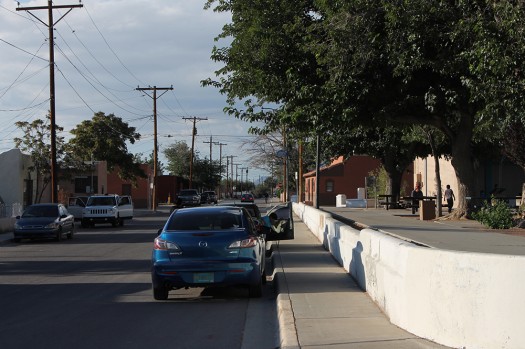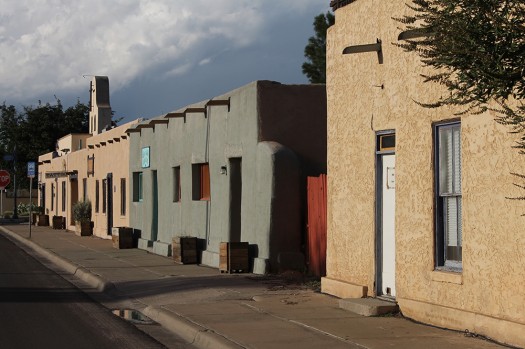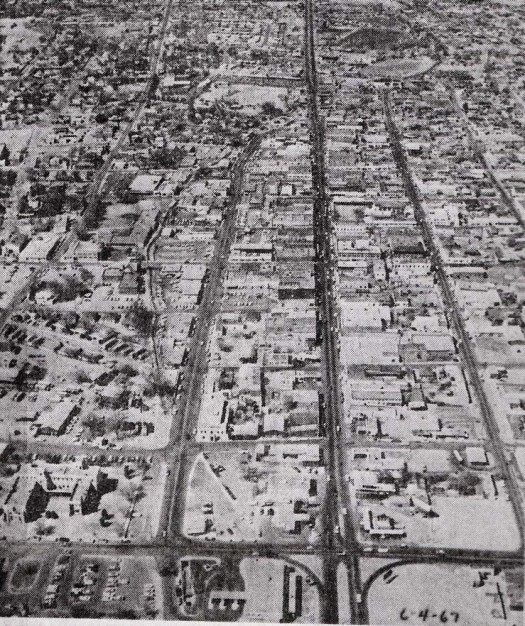A Placemaking Journal
Let Love Rule: Resilience in Mesquite
 Crossing Campo Street from downtown Las Cruces into the Mesquite Historic District is like crossing between two urban worlds that are often misunderstood.
Crossing Campo Street from downtown Las Cruces into the Mesquite Historic District is like crossing between two urban worlds that are often misunderstood.
To the west is one of the country’s textbook examples of everything that could go wrong with federally subsidized Urban Renewal, including the obligatory seas of parking, corporate CBD architecture, vacant properties, and a one-way loop that locals derisively refer to as “the race track.” The stunning aerial view from 1974 shows the city after its failed open-heart surgery. Even today, after a heroic struggle to dismantle the virtually abandoned pedestrian mall and reinstitute automobile-access on Main Street, the pain of this flattening experience lingers on. The place is deserted on a beautiful September evening.
To the east, Mesquite escaped most of the bulldozers and still faces Campo Street with modest but charming one-story adobes. It is the original town site along the Camino Real and was platted in 1849 by New Mexicans from nearby Doña Ana — a truly traditional neighborhood lived in by more than twenty of the original settler families. In contrast to downtown, the streets here are narrow with few parking lots, lined by modest one-room-wide adobe boxes with portales, small shop fronts, and garden walls. Age has given it character — at times picturesque, at times desperate for care. But unlike the city center, Mesquite is alive.
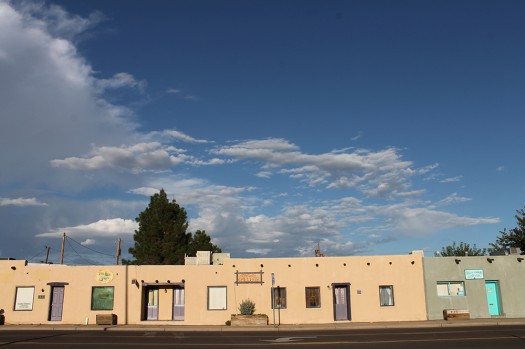

In Klein Park, families are gathered under a tree at the very corner where the first settlers cast lots for the newly surveyed properties. Kids are zipping by on scooters, and men are working on their cars. It’s not much of a tourist attraction, but it’s a real place with thriving families, some economic struggles, some hip renovated historic properties, barking dogs, and corner stores. The homes are economical, close to the street, and most show evidence of care and pride. It’s a place that works and is loved by those that live there.
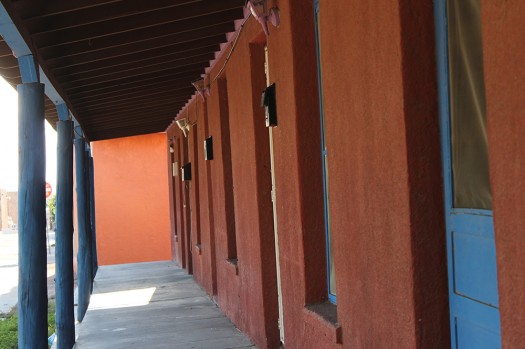

It wasn’t always this way. The virtual destruction of the city center proved a hard blow to Mesquite, which struggled with neglect and gang violence in the aftermath of Urban Renewal. A 2006 ceramic tile mural stands in Jardin de Mesquite as a vivid reminder of this. The work was commissioned by Las Esperanzas, a civic organization founded by a group of concerned women who returned to care for their aging parents in the 1980s, but then found themselves in a critical leadership role to help reduce crime and uplift community pride. After years of hard work and collaboration, Mesquite is back on its feet, thriving within the same resilient blocks and buildings built generations ago. And almost all of them would be against the rules under typical contemporary planning and zoning regulations.
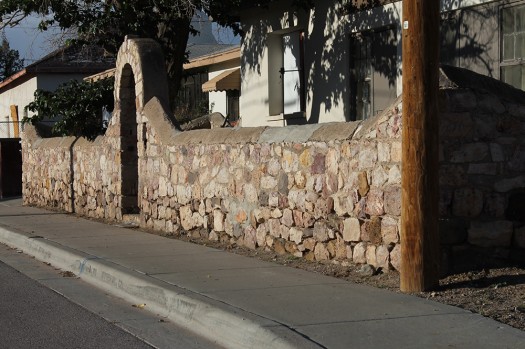
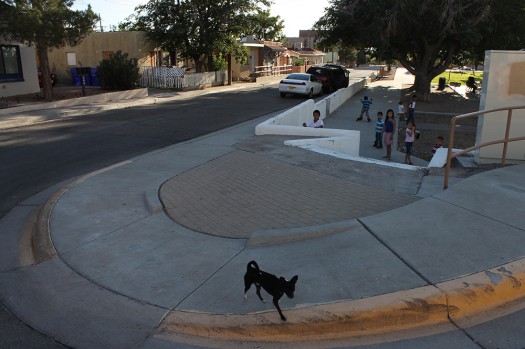
The demolition of the city center is understood as an epic mistake by almost everyone here, but have we learned the important lessons from the tragedies of Urban Renewal? Some time ago I was having dinner with a local planner who lamented the loss of downtown Las Cruces through Urban Renewal but then immediately suggested that the demolished properties were in serious disrepair and that despite the relatively active merchant scene in the 1960s “probably needed to be torn down.” It was like I was re-witnessing the introductory scene in The Death and Life of Great American Cities, in which Jane Jacobs’ city planner acquaintance acknowledges that life in Boston’s North End is generally functional and healthy while in the same breath condemning it as a slum that deserves to be razed. Fifty years later, planners still seem to miss how the physical environment helps to support social, cultural, and economic resilience.
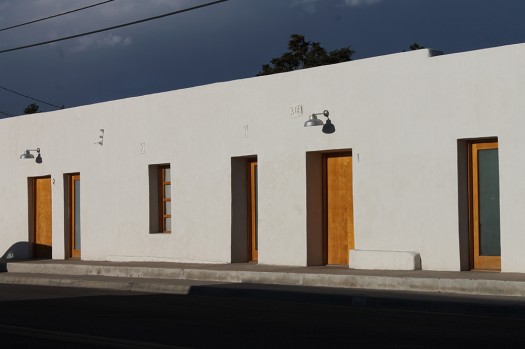
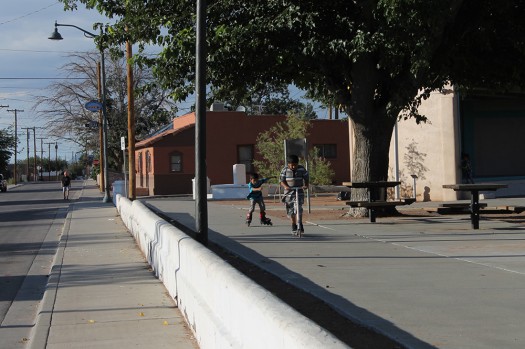
The contemporary architecture profession certainly hasn’t helped much either. Dazzled by the newest and boldest, architects frequently find themselves unable to understand the significance of the simple, time-honored forms of common buildings. Instead, buildings too often become an exercise in expressive acrobatics or cartoon imitations. New Mexico is littered with new buildings inspired by local traditions while missing the essentials: a good frontage, with openings, walls, shelter, service and parking just in the right place for both residents and the pedestrian passer-by. Mesquite is full of these essentials: simple forms that promote economy and flexibility; proportions that enable natural cooling and ventilation; arrangements that enable efficient land use and incremental generational growth; elements that cultivate public and private outdoor life; dispositions that enable discreet parking and storage; details and colors that promote joy and identity.
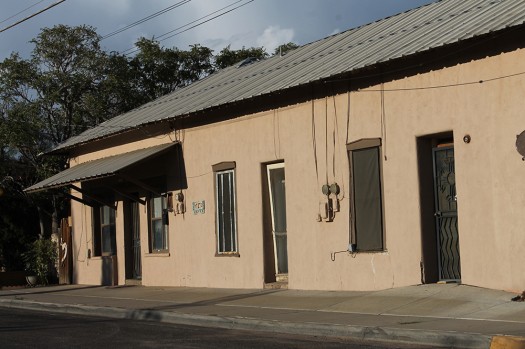
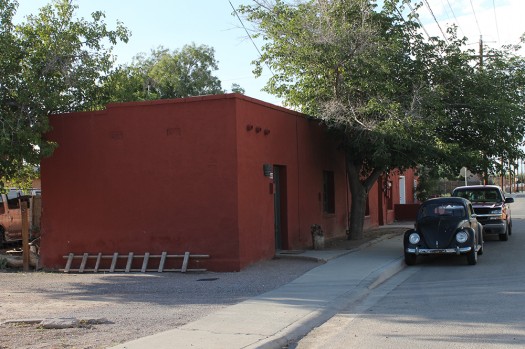
Glancing at the 1967 bird’s eye view, taken just before Urban Renewal, I can only imagine the equally supportive and resilient environment that must have existed in downtown Las Cruces. Of course it wasn’t perfect and was showing its age, as does Mesquite. But it supported approximately 160 businesses on Main Street. Within three years of the pedestrian mall’s completion, that number dropped to 90. In 2005 there were fewer than 10. This kind of history should inspire respect. In city planning, this means respect for private properties, and the law of unintended consequences. It means respect for time-honored forms that have proven to be economical, resilient and capable of renewed purpose. It means respect for communities and the local particulars that enable them to thrive in the long term.
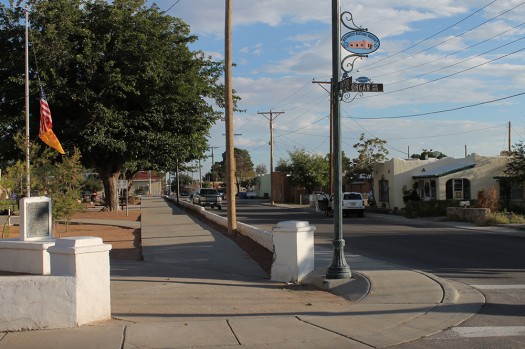
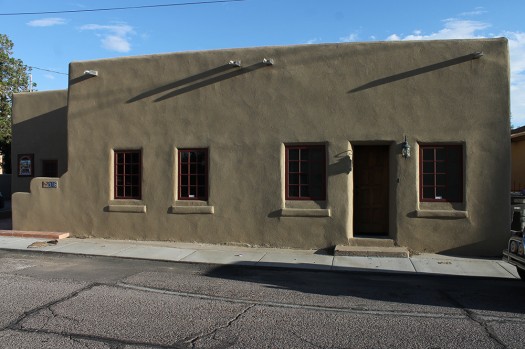
Fortunately, Las Esperanzas and the Mesquite neighborhood have led the way. In partnership with the city’s planning department, the neighborhood pushed for its own neighborhood plan, zoning overlay district and code. It’s a clear, context-sensitive, and character-based zoning that encourages all of the essentials for Mesquite: mixed-use, higher densities, and excellent private building frontages. While this neighborhood must function within the larger city bureaucracy, Mesquite has re-written the rules to fit its context. Even downtown Las Cruces is determined to rebuild through a participatory process and intends to repair its fabric for the 21st century with a new supporting code and plaza.
Your neighborhood’s local essentials may be different than in Mesquite, but perhaps it’s time to consider whether your local planning tools are supporting a thriving and resilient future.
If PlaceShakers is our soapbox, our Facebook page is where we step down, grab a drink and enjoy a little conversation. Looking for a heads-up on the latest community-building news and perspective from around the web? Click through and “Like” us and we’ll keep you in the loop.


